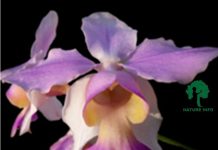Scientific name: Jasminum multiflorum (Burm.f.) Andrews
Family: Oleaceae
Synonym: Jasminum pubescens (Retz.) Willd.
Bengali/Vernacular name: Meghmollika, kunda, Kundaphul.
English name: Star jasmine, Downy jasmine, Hairy jasmine.
Description of the plant: A scandent shrub. The stems and leaves are covered with a downy pubescence (micro hair) that gives the plant an overall grayish-green appearance. Leaves simple, opposite, 4-8 cm long, lanceolate-oblong to broadly ovate, acute at the apex, rounded at the base, margin entire. Flowers white.

Plant parts used: Leaf, flower, and root.
Ethnomedicinal uses: A fresh juice is extracted from the leaves of the plant is taken twice a day (two tea spoons amount each time) for three days to treat fever and epilepsy.
Cottonseed-sized pills are made with the dried leaves of the plant with some honey is taken thrice a day (one pill each time) for one month to treat impotence.
Decoction prepared from the roots of the plant is used for the treatment of asthma, cough, and bronchitis.
A paste is made with the leaves of the plant is applied externally to treat headache, leprosy, wounds, and skin disease.
Decoction of dried flowers is used as eye wash for eye redness and swelling.
A fresh juice is extracted from the leaves of the plant is taken twice a day (10 ml amount each time) for seven days to treat urinary tract infection.
The roots of the plant are used for the treatment of ulcer and insanity.
Distribution: The species is found in Chittagong, Dhaka, Rajshahi, and Sylhet districts.
Is this plant misidentified? If yes, please tell us….














